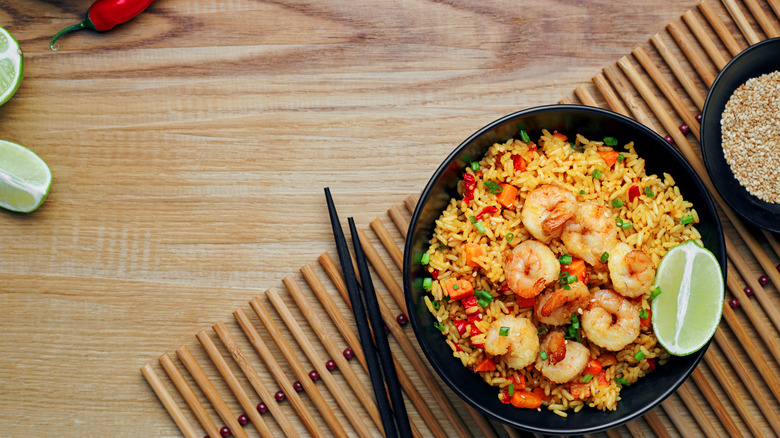What To Do With Leftover Thai Curry Paste
No self-respecting Thai kitchen is without at least one mortar and pestle — a heavy-duty one that can pulverize solid spices like black peppercorns into powder or coax individual pieces of ginger, galangal, shallots, garlic, and chili to become part of an enticing and fragrant whole.
Most blenders or food processors have not displaced the granite mortar and pestle in the Thai kitchen, and there is a reason for that. In her cookbook "Dancing Shrimp" and as featured in Temple of Thai, cookbook author Kasma Loha-unchit points out that pounding and crushing Thai herbs and aromatics does more to extract their essential oils and results in a more flavorful curry paste. Serious Eats also suggests avoiding using blenders and food processors because they cannot get the ingredients fine enough so they can amalgamate and become a paste.
Thai curry paste, known locally as prik gaeng, isn't just for curries. It is actually a flavor base from which many tasty dishes can spring. And while the number of ingredients that can go into a prik gaeng range from seven to 15, you can expect that all pastes will deliver some level of heat since "prik" or chili, is an essential ingredient, per Serious Eats.
Use Thai curry paste in fried rice or burgers
Other than chili, curry paste features a number of fresh aromatics like shallots, garlic, lemongrass, galangal, cilantro root, and lime zest (via The Woks of Life). It will also have fermented shrimp paste, also known as gapi, so that the ingredient has an umami kick to it, per Serious Eats. The addition of shrimp puts this ingredient on a list of "can't haves" for vegans, vegetarians, and those with shellfish sensitivities, so in cases where you're making the curry paste yourself, you might want to use fermented soybean or some type of miso, which are both adequate substitutes.
If you've only ever bought Thai curry paste to make curry with and then had some to spare, it is essential to note that the ingredient is far more versatile than you might think and that you can use the spice mash in different ways. According to Siam, red curry paste, or "Prik Gaeng Pad," is quite mild and can be used to stir-fry proteins and vegetables, while green curry paste, or "Prik Gaeng Khiao wan" — which is spicier — can also be used to make fried rice.
Feel free to add yellow curry paste or "Prik Gaeng Garee" as a marinade to make satay skewers or to enhance a steaming concoction of stew. And for a nutty, robust flavor, mix Panang curry paste or "Prik Gaeng Panang" with a ground protein to make Thai-style burgers, per Siam.

